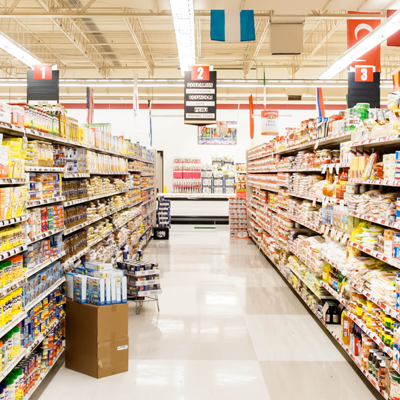Fuel campaign performance with laser-focused targeting

'Shopping'. This one word drives intense emotions in India. For many it is a way to earn their daily means employing around 40 million Indians (3.3% of Indian population) contributing nearly 15% of our GDP. For several Indians, shopping is therapeutic (I can imagine my wife nodding in agreement). And for many like me it is a weekly drudgery and dreaded task especially grocery shopping.
What really intrigues me though is for the last 25 years shopping has always been anchored on products/brands/category whether on the aisles of a physical store or even a virtual store (desktop or mobile). You go within a particular space in the store looking for say TV (Electronics-> Consumer Durables) or Chinos (Men Fashion -> Clothing- > Trousers ) to get what you want. Also Shopping is "Intent" & "Destination" led where consumers generally know what they are looking for and go to a certain place to buy that.

Looking at history of shopping in India over the past 2-3 decades, it has evolved every 4-5 years. In late 80's, shopping was all about haggling for prices in Sunday Bazaar. Organized retail hit India post the liberalisation in early 90's. The mall revolution married shopping with leisure and eclectic experience of movie watching, fine dine and social sports. Another channel of shopping through TV started from early 2000s. And as Internet revolution reached India in late 2010, shopping moved online. Thereafter, mobile began to play a more prominent role, offering all the above benefits of convenience, deep discounts and wide assortment of products. Interestingly all formats of shopping have co-existed in the country despite skeptics sounding the death knell for the older formats.
The next wave of Shopping will be anchored around "User Interests & Persona" & will be "Destination-Less". Products & services of any category (physical / virtual ) will align itself to a particular persona it can appeal. Say If I am lazy and postpone my decisions to last minute, my recommendations / product catalog will change to my situation. Perhaps at that moment, any product or service that requires minimum effort shall appeal to me. For example, instant food or ready-to-eat meals, a food delivery app, a recommendation for a quick weekend getaway or even tax saving mutual funds in case I am lazily pondering over my future. Alternatively my wife who loves ethnic and rustic stuff will not only like ethnic wear but also antique furniture, Ayurveda, Shiva Trilogy of Amish Tripathi or digital folk music. Of course we are an amalgamation of several interests & persona nuanced by culture, age, context etc. adding layers of multi -dimensional complexity with irrational behavior. However intersection of "Social, Mobility & Big Data" will be able to gradually solve this complexity.
Also consumers will NOT go with an particular intention to shop. "Serendipity Shopping" can happen on any destination (a movie theater, a music/news app, an office setup etc). In the digital world this can happen at scale powered by social recommendations, curation and discovery. Say you are reading a fitness article you discover not only similar articles (as the case today) but also a fitness app like Run Keeper, a health band like Fitbit or Goqii or a Nike shoe & a gym membership. In an action thriller movie you watching you may discover the a hard core game like 'Game of War', an article on history of the Cold War or the place to buy the leather jacket the protagonist is wearing. The line between the point of inspiration and transaction will be blurred in the destination-less world.
Shopping is all set to be re-imagined with the consumer at the epicentre, powered by social curation and serendipity in a destination-less world.
Register to our blog updates newsletter to receive the latest content in your inbox.